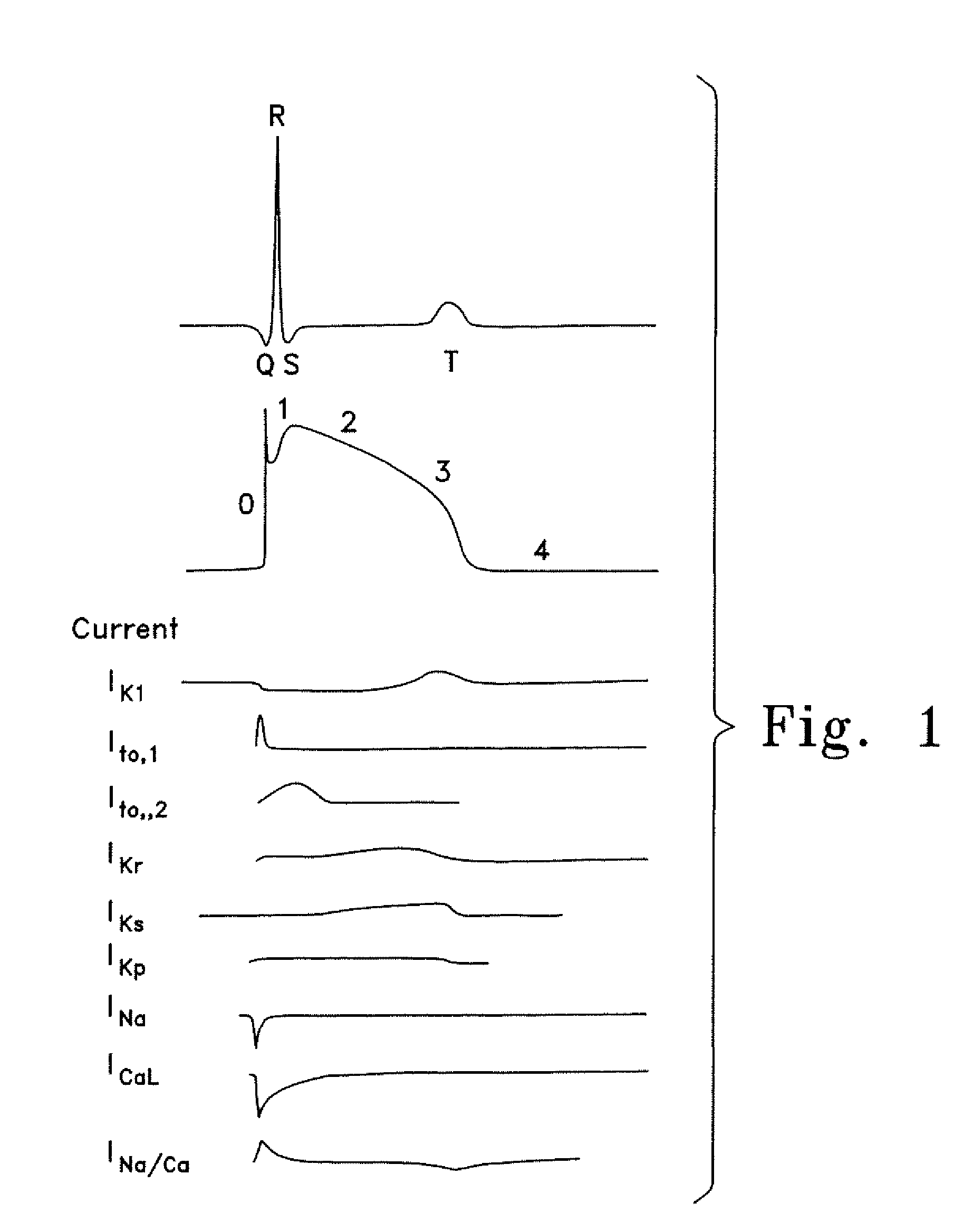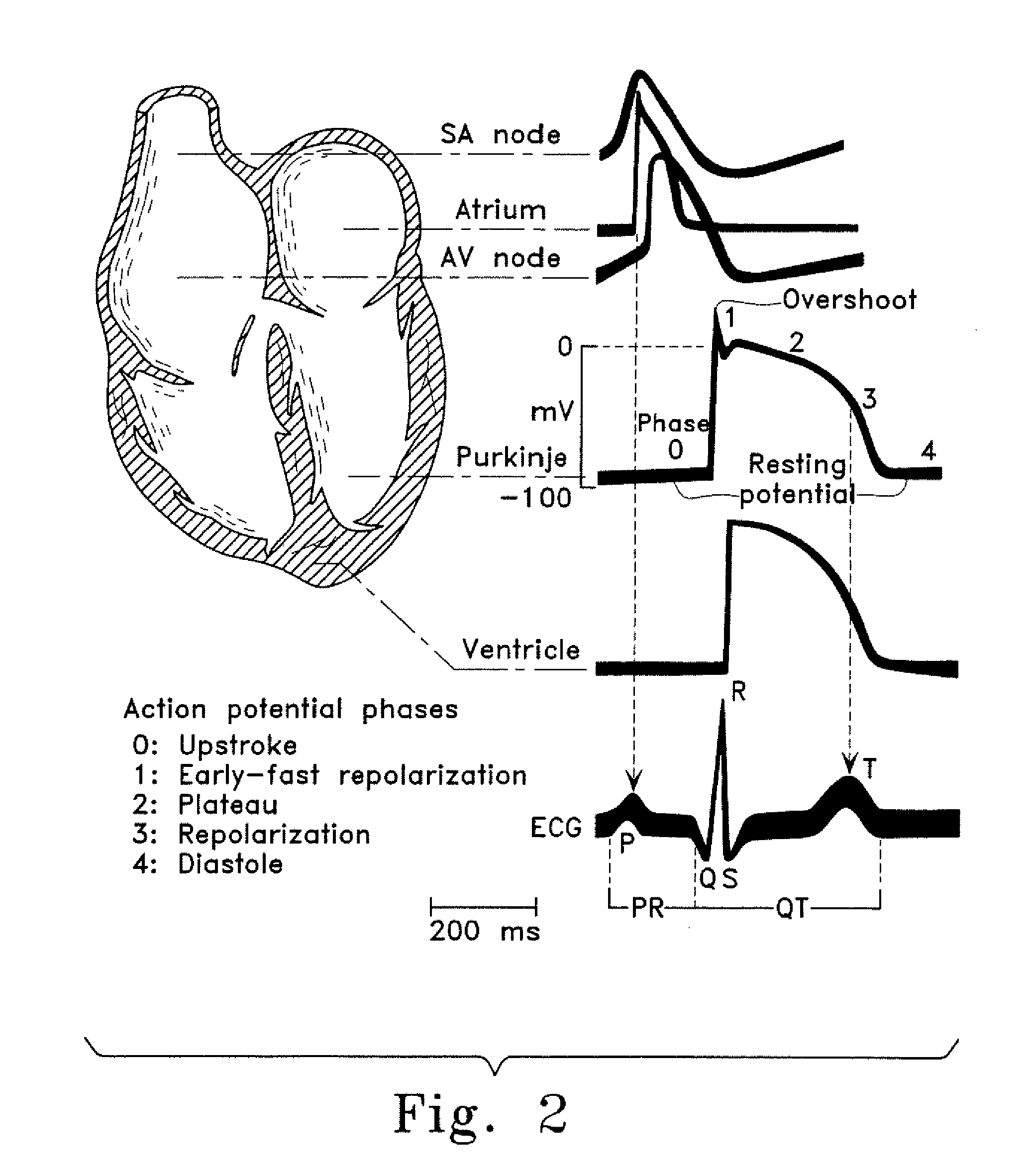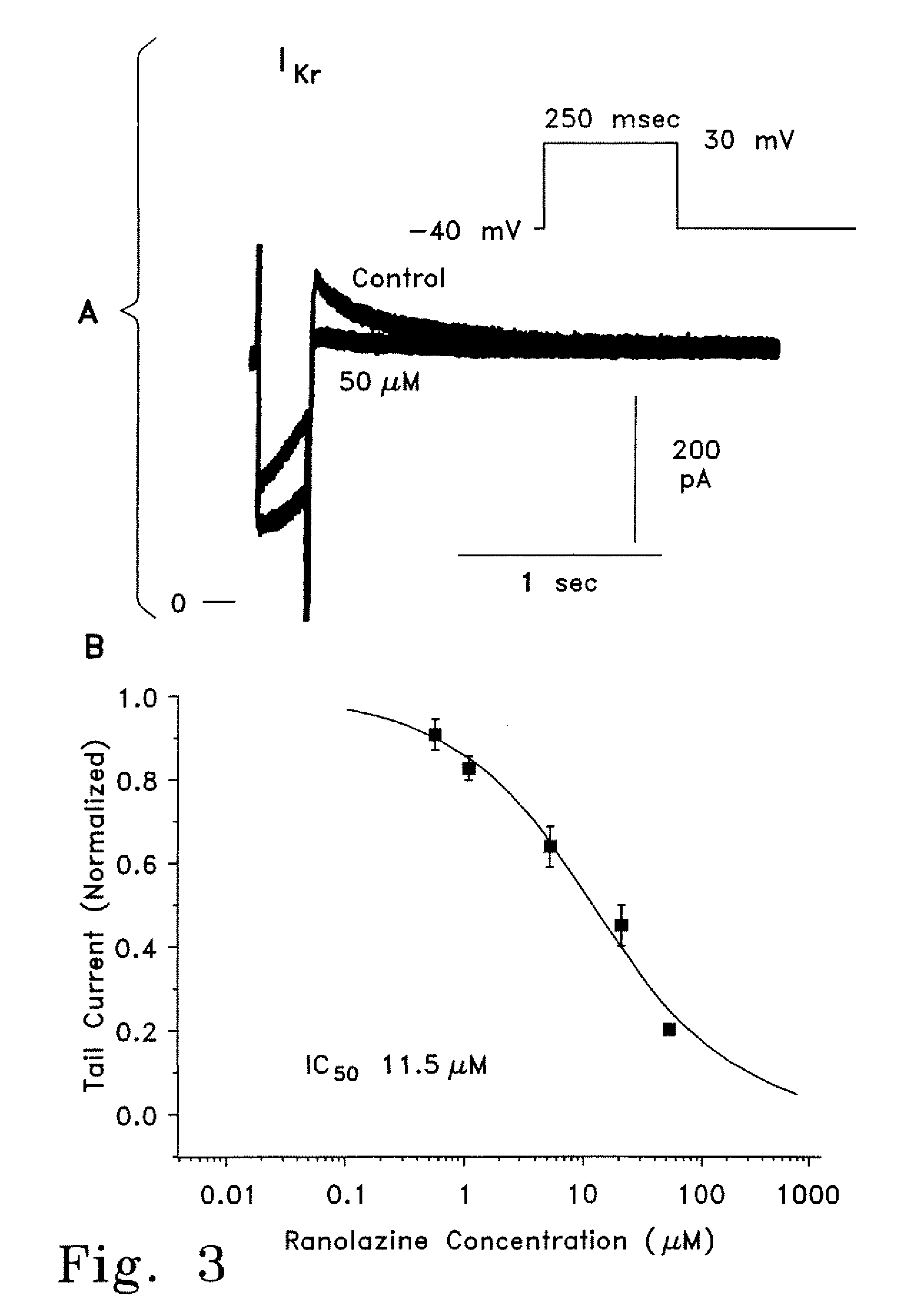Method of treating arrhythmias
a technology of arrhythmia and ead, which is applied in the field of treating cardiac arrhythmias, can solve the problems of irregular rhythms (arrhythmias) that can be minor inconveniences, and the ability of the ventricle to eject blood is often significantly reduced, so as to suppress ead and suppress triggered activity.
- Summary
- Abstract
- Description
- Claims
- Application Information
AI Technical Summary
Benefits of technology
Problems solved by technology
Method used
Image
Examples
example 1
[0199]Hard gelatin capsules containing the following ingredients are prepared:
QuantityIngredient(mg / capsule)Active Ingredient30.0Starch305.0Magnesium stearate5.0
The above ingredients are mixed and filled into hard gelatin capsules.
example 2
[0200]A tablet formula is prepared using the ingredients below:
INGREDIENT(mg / TABLET)Active Ingredient25.0Cellulose, microcrystalline200.0Colloidal silicon dioxide10.0Stearic acid5.0
The components are blended and compressed to form tablets.
example 3
[0201]A dry powder inhaler formulation is prepared containing the following components:
IngredientWeight %Active Ingredient5Lactose95
The active ingredient is mixed with the lactose and the mixture is added to a dry powder inhaling appliance.
PUM
| Property | Measurement | Unit |
|---|---|---|
| concentrations | aaaaa | aaaaa |
| voltages | aaaaa | aaaaa |
| voltages | aaaaa | aaaaa |
Abstract
Description
Claims
Application Information
 Login to View More
Login to View More - R&D
- Intellectual Property
- Life Sciences
- Materials
- Tech Scout
- Unparalleled Data Quality
- Higher Quality Content
- 60% Fewer Hallucinations
Browse by: Latest US Patents, China's latest patents, Technical Efficacy Thesaurus, Application Domain, Technology Topic, Popular Technical Reports.
© 2025 PatSnap. All rights reserved.Legal|Privacy policy|Modern Slavery Act Transparency Statement|Sitemap|About US| Contact US: help@patsnap.com



